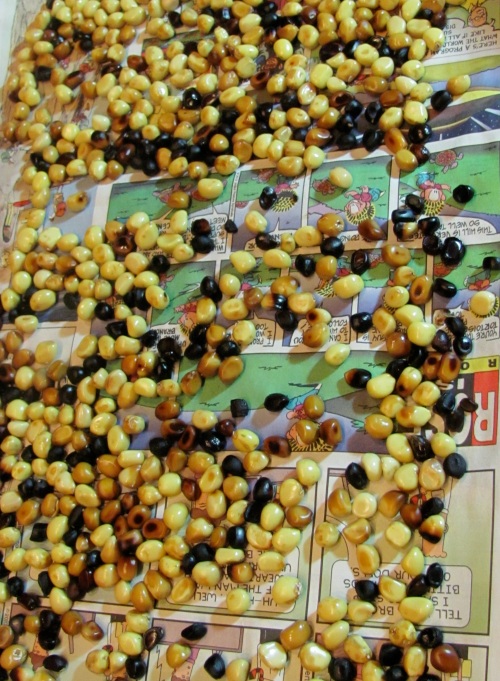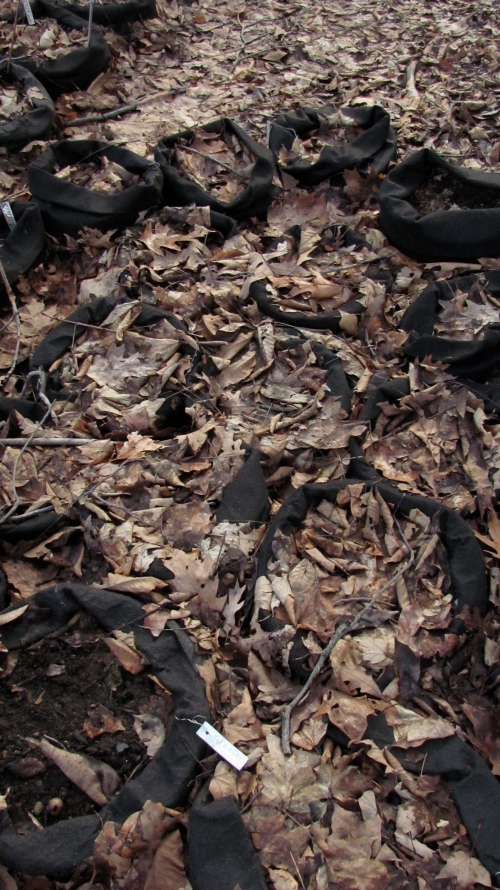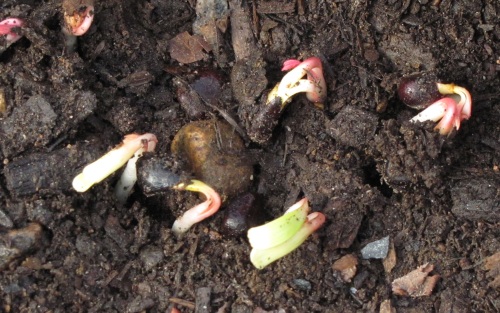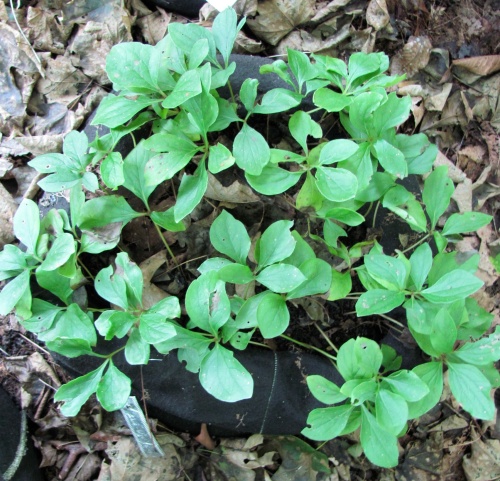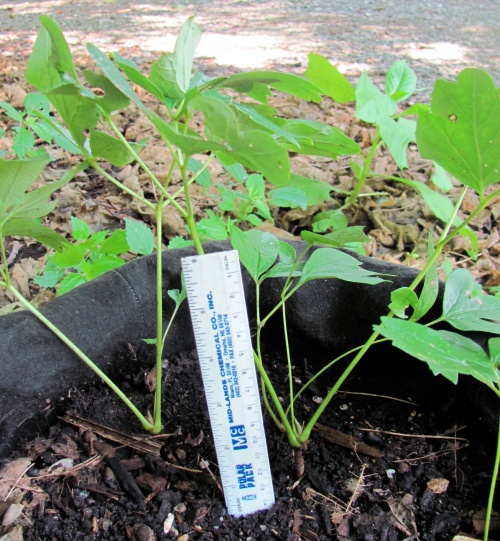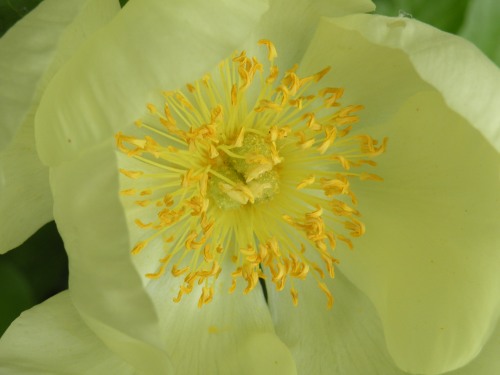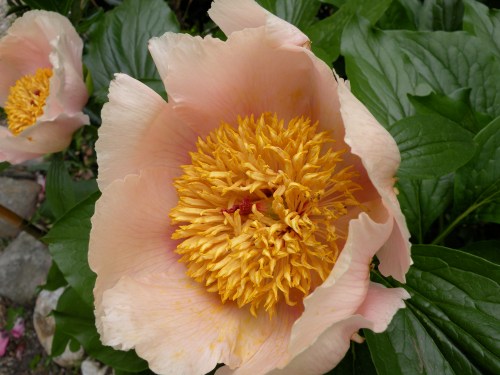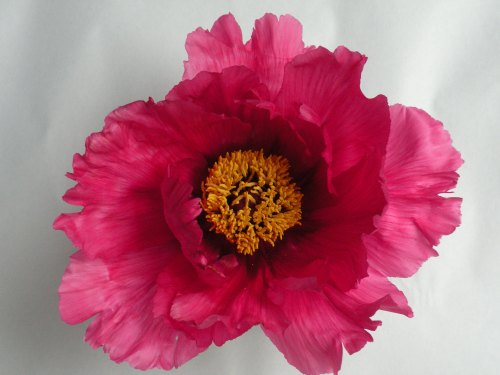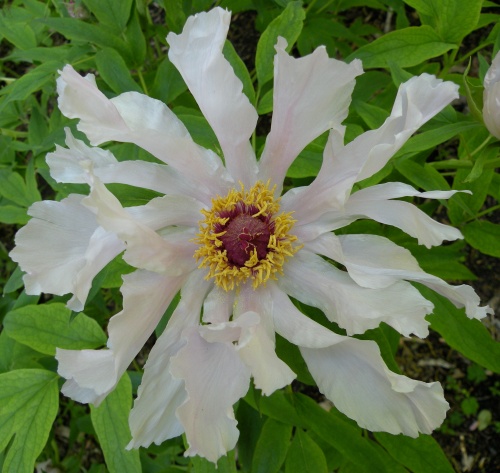Starting Peonies from Seed
Each year we collect seeds from our collection of Northwest Cultivar Group (rockii) tree peonies. You can order them from our website or send us $12 to receive 25 freshly harvested in late August. (Price includes postage.) We also have limited numbers of other peony seeds for sale. Please see our website for full information. Get your requests to us soon, we can only provide seeds a limited number of seeds each year.

Many of the seeds of Northwest Cultivar group p.rockii tree peony hybrids will yield plants which will produce these beautiful white flowers with maroon flares (blooming in about four years). This flower form and color is very similar to the wild species P. rockii.
Late August to early September will be the time to collect this year’s peony seeds. The vast majority of peonies yield viable seeds so if you left the pods on the plant all summer, try your hand at raising a crop of peonies from seed. Peonies raised from seed do not come true to the parent plant, though they may strongly resemble it. Almost all cultivated tree and herbaceous peonies are hybrids far removed from their wild species ancestors. The exception to this rule are seeds collected from a single species of peony which did not cross pollinate with other peonies.
Intersectional hybrid (Itoh) peonies are sterile and do not yield viable seeds. Unfortunately some garden favorites like the advanced herbaceous hybrids ‘Coral Charm’ and “Lois’ Choice’ are also infertile. Most of the European and American ‘lutea’ hybrid tree peonies like ‘Leda’ or ‘High Noon’ very rarely produce viable seeds. However, these are but a very small subsection of the peony world, the overwhelming majority of Chinese and Japanese tree and herbaceous peonies all yield large quantities of fertile seeds that will soon be ripe for the picking and planting.
Right now the beautiful star shaped pods are swelling and beginning to turn from a leathery green to brown in color. Seeds are ready to be harvested when the seedpod has turned a dark tallow-brown. We generally harvest our tree peony seeds here between the 3rd week of August and early September.
The herbaceous seeds are ready a bit later, around the end of August.
Methods for Seeding Tree and Herbaceous Peonies
When the seed pods have become a dark brown color and are just beginning to crack open, the seeds are ripe and ready to be harvested. Open up each segment of the seed pod carefully and remove the seeds. Damaged seeds will not germinate.
When fully ripe, peony seeds develop a double-dormancy which consists of a hard outer seed coat and dormant embryo. Germination occurs when air and water are able to penetrate the seed coat and reach the embryo.
Direct seeding outdoors
Freshly harvested seeds may germinate in the same season (in the late fall) and sprout the following spring as a small green shoot above the soil. Directly planting dry seeds with a hard and dry seed coat may need two growing seasons to naturally overcome the double-dormancy. These seeds shown below are harvested a little too soon. We have learned that it is better to wait to harvest brown and black seeds, otherwise the seeds will easily mold if not cured and somewhat dry.
- Within each lustrous pearl is the germ of a peony which the world has never seen bloom, and has the potential to awe onlookers for centuries to come. Make the world a more beautiful place, plant some peony seeds this fall.

Left to mature seedpods will change to a dark brown and inside the seeds will change to black. The seedpods will also crack open. This is the time to plant the seeds.
Plant fresh (tan, brown or black) seeds directly in a sandy loam, garden soil mixed with a little extra sand, perlite or aged bark nuggets for drainage. The pH should be near 7.0, which often means adding some garden lime to sweeten the soil. Either plant directly in a seed bed or use pots with good drainage holes, 10-12” in diameter. We prefer clay pots or root control bags for seeding, though plastic pots will work.
Plant seeds about 1-2” apart, 2“ deep, and water well to settle in. Seed orientation does not seem critical; the rootlet will find its way downward. At Cricket Hill Garden, we will sink the pot into the garden bed so it is protected in winter. Choose a site that is half sun, half shade. Cover over the seeds with 2-3 inches of mulch for protection from squirrels. If late summer and fall weather is hot and dry, water periodically to prevent drying. Normally, this is not needed after September in our climate. Later in fall, in late November, add 2-3 more inches of mulch for winter protection.
If conditions are right, the warm late summer weather will cause the seed to sprout and then cooler fall temperatures will promote root growth until the freezing weather. Nothing will show above soil level until next spring. Some seeds will not germinate until the second spring. Do not be impatient. We have given up on tree peony seed pots too soon, only to have them sprouting and growing in the compost pile! After two full years and 2 springs have past, and nothing shows, then likely you have a failure to germinate. This is often the case when you let the seeds dry out while germinating. So the first fall is very critical to have some moisture in the seed pot.
Remove mulch from the pot in spring about two weeks after the ground has thawed, leaving pot submerged in the garden. Observe any new growth by May. Young sprouts need to be watered and fed a mild liquid fertilizer, such as Neptune’s Harvest fish-seaweed fertilizer every other month during the growing season, April to September. Young sprouts will be about 2” tall.
Move young seedlings ONLY IN THE FALL. Allow them to grow undisturbed until September of their first year. After the first year space to about 6” apart in the garden.
Young plants may be moved again in the fall season of their third year to a more permanent location. Allow at least 4 to 5‘ for each plant (3′ for herbaceous peonies) choosing a well drained site with 5-6 hours of sun for tree peonies. Tree peony seedlings will often start to bloom in their fourth year. While herbaceous will sometimes bloom in their third year. Keep in mind that peonies sometimes take several years of immature flowers before they show their mature form.
We have found this ‘direct’ seeding method very effective for seeds of Northwest Cultivar group Chinese (P.rockii) tree peonies such as ‘Snow Lotus‘ and herbaceous peonies. Seeds from other hybrid groups of tree peonies may germinate more easy with the benefit of the steps described below.
GERMINATING FRESH PEONY SEEDS INDOORS
Open freshly harvested seed pods as described above. Instead of opening seed pods immediately after harvesting, some growers allow the pods to cure in brown paper bag for a week in your garage or a shady, dry area. After a week, carefully open the seedpods.
Place the seeds in a zip-lock bag of slightly damp fine sand or vermiculite. Put the bag in a warm place (around 80 degrees). We use the top of our refrigerator. Root growth may commence in 4-12 weeks, after which point the sprouted seeds (identifiable by protruding white rootlet) can be planted outside as described above or put in a refrigerator for a period of cold stratification of 3 months at 40 degrees (the vegetable crisper of the refrigerator is a good spot).

Sprouted herbaceous peony seeds. These can either be planted outside if its early in the fall or put in the refrigerator for a period of cold stratification.
After this point the sprouted seeds can be planted in pots and either grown under lights indoors or gradually introduced to natural sunlight outdoors. A note of caution, the protruding rootlet is very fragile, so handle with care when planting. If seeds fail to germinate after the first cycle of hot/cold stratification, repeat the three months of warm treatment (around 80 degrees) followed by 3 months at 40 degrees.
Peony seeds which have a black or dark brown in color and have a hard seed coat. If these seeds are planted outside without any special treatment, it will likely take two growing seasons for the right combination of water, heat and bacteria to beak down the seed coat and allow water and air to reach the embryo. We recommend scarifying the seed with a file or medium sand paper. Two or three passes is all that is needed to gently rub the seed coat. See the photos below.
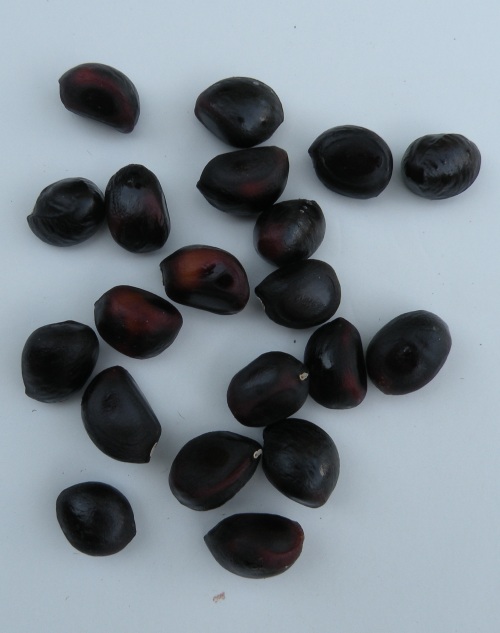
Without special treatment, dry, black seeds need to go through a period warmth and winter chill (either natural or simulated) before germinating.
In order to speed germination, the seeds can be scarified. This is a method of physically breaking down the outer seed-coat. We use a rather course file.
About 2-3 light passes with the file is all that is required, filing too deep will damage the embryo. If you file the seed down to the point of the white interior, you have gone too deep. Filing so that you remove the outer seen if usually enough. It is only necessary to file a small section of the seed. A diluted solution of sulfuric acid can be used to scarify large batches of seeds.

Filing just below the shiny exterior coat is all that is necessary to allow air and moisture to reach the dormant embryo initiate germination.
If planting indoors, follow the instructions for warm/cold stratification in the section for planting fresh seeds.
Some other considerations regarding peony seeds:
- Single, and semi-double flowers tend to yield more seeds than complex double forms.
- Place in cold and dry storage if you are unable to plant right away.
- Seeds collected from single specimen tree peonies (not in proximity to any other tree peonies) may not be viable.
Some of the beautiful tree and herbaceous peonies we have raised from seed. We call them our own Peony Heaven hybrids, but really we are just stealing the credit of the bees and the wind!



